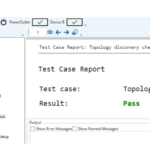With any unscheduled downtime being a cause of major headaches for food and drink manufacturers, John Rowley of Mitsubishi Electric highlights how predictive maintenance can provide the solution and how easy it is to implement.
With food manufacturers being continually squeezed on price by retailers and asked to fulfil orders for supply that can seem, at best, challenging and at worst highly unrealistic, improving productivity is a priority. Tight timescales mean many lines are already running on a near 24/7 basis, leaving little leeway even for scheduled maintenance, let alone an unexpected breakdown. This can lead to overcautious service and maintenance regimes, which are expensive to support, but preferable to unscheduled downtime which is the worst possible scenario.
Short supply or delayed delivery due to plant failure damages a business’s reputation and impacts on the relationship with the customer. And as many food and beverage manufacturers find to their cost, customers such as supermarkets can’t support empty shelves, which makes them very demanding customers indeed.
How to avoid grinding to a halt
Let’s not forget as well, that many production line failures are not characterised by a sudden fault that results in immediate line stoppage. Often it is a gradual degradation that impacts on product output. That means before the line eventually grinds to a halt, it might have spent a considerable period producing inconsistent goods – that add to the bottom-line cost of the issue, due to waste.
So we can see that both unscheduled downtime and the developing causes of that downtime both impact directly on productivity, with a direct link to increased costs. The impact of unpredictable downtime is felt right across the food and beverage industry.
The good news is that random equipment failure – leading to unscheduled, emergency repair – doesn’t have to be a fact of life. Modern condition monitoring sensor technology can be easily retrofitted to rotating plant and equipment, while many of today’s plant and machine controllers have advanced monitoring and diagnostics functions built in, ready to use.
Taking advantage of these technologies can quickly take food and beverage companies into the realm of predictive maintenance, where businesses can see advanced warning of impending equipment failure, with enough time to plan repairs during scheduled maintenance periods rather than being hit with an asset failure out of the blue.
Evolving from preventative to predictive maintenance
A conceptual and technological leap forwards from preventative maintenance, intelligent predictive maintenance ensures an asset is serviced only when needed, not based on routine helping to increase both productivity and efficiency. Predictive maintenance spots equipment problems as they emerge and develop, providing ample warning of impending failure, and so helping to maximise asset availability. They also help combat inadvertent neglect; humans are generally very smart, but not 100% of the time, and situations change, as do staff, taking knowledge built-up over years with them.
Importantly, these predictive maintenance solutions are not complex; frequently they are simple and cost-effective to implement, and often they can be built from functions that already exist within the plant’s control equipment.
Take, for example, the add-on sensors that have been developed to monitor the increases in operating temperature, excessive current draw, changes in vibration characteristics and significant shifts in other operating parameters that can all be indicative of impending problems in rotating machines. Today these sensors come with embedded ‘smart’ functionality, revolutionising condition monitoring.
A simple add-on to pumps, motors, gearboxes, fans and more, these sensors used a simple traffic light system of red, amber and green lights to provide at-a-glance monitoring of the condition of the machine. They can also be connected into wider factory automation networks using Ethernet and a managing PLC for a smarter solution.
From traffic lights to telemetry
In isolation sensors offer a great start point to implementing preventative maintenance strategies, but of course there are limitations to the traffic light warning system. While it indicates that a problem is developing, it gives no real clue as to what the problem might be or just how serious it is; it offers no practical recommendations as to how the problem should be addressed; and while it shows problems developing on individual machines, it fails to provide an overview on the asset health of the plant.
It is these limitations that Mitsubishi Electric has addressed with the Smart Condition Monitoring (SCM) solution. The kit provides an integrated approach to monitoring the condition of individual assets and enables a holistic approach to be taken to monitoring the asset health of the whole plant. Individual sensors retain the traffic light system for local warning indication at the machine, but at the same time information from multiple sensors is transferred over Ethernet to a Mitsubishi Electric PLC for in-depth monitoring and more detailed analysis.
The SCM kit provides a plug-and-play solution for machine condition monitoring. Sensors can be added to machines as and where required, with a simple teach function allowing the sensor and controller to learn the normal operating state of the machine, generating a memory map of key parameters. Once set up, the SCM provides 24/7 monitoring of each asset, with functions including bearing defect detection, imbalance detection, misalignment detection, temperature measurement, cavitation detection, phase failure recognition and resonance frequency detection.
Linking multiple sensors into the control system enables the controller to analyse patterns of operation that are outside the norm, with a series of alarm conditions that can provide alerts when attention is needed. The SCM analysis provides detailed diagnostics, offers suggestions for where additional measurements should be taken, and provides maintenance staff more precise error identification. It can even make recommendations as to what rectification actions should be taken, with clear text messages presented to personnel. Further, this information can be networked to higher-level systems for ongoing trend analysis across all the assets around the plant.
Muntons Malt demonstrates how it should be done
Looking at a practical example of the technology in action, Muntons Malt, one of the UK’s largest producers of malted barley is reaping the benefits of the SCM system to protect fans and motors vital to its large-scale and sensitive production process. The operation team had previously experienced issues with difficult-to-reach bearings inside a large fan housing, realising too late that a problem existed, and was forced to make an unscheduled stop to one of the lines to make repairs.
Determined to learn from this, Muntons Malt installed the SCM system on two large 315kW fan sets and a single 90kW fan set, referencing the electric motor, power transmission coupling and main fan shaft bearing on each. The company is now acutely aware of the health of the fan sets and has a very clear picture of any maintenance way in advance of needing to make physical changes. Remote monitoring and fast diagnosis of any issues has also made the company very responsive should the operating parameters that have been set, even be approached.
With the technology, live information and any alarms are displayed on a GOT Series HMI mounted in the control enclosure. The system can work autonomously of any other automation, with multiple sensors located and recognised by unique IP addresses. However, at Muntons Malt the visual information as well as the alerts were connected into the existing automation software platform.
This ease of connectivity illustrates further benefits of today’s condition monitoring technologies, which can provide immediate, visible alarms anywhere in the world on smart devices. For multi-site businesses, this can aid in quickly changing over production schedules from one plant to another to fulfil the most pressing orders or can alert remote maintenance teams of the need to perform more detailed diagnostics.
The information might already be in your drives
This information isn’t just coming from external sensors. Modern drives, PLCs, SCADA systems and other automation products have comprehensive diagnostics capabilities inbuilt, monitoring not only their internal workings but also parameters such as current draw, voltage and temperature in connected motors, pumps, fans and compressors. All of this helps to build a detailed picture of the health of plant assets.
And with a simple plant network backbone, this information can be shared around the plant and beyond. Indeed, this sort of functionality is a key aspect of Industry 4.0 and is at the heart of the benefits of the digitalisation of production.
We can see, then, that predictive maintenance strategies can offer comprehensive analysis on the health of individual machines as well as a holistic overview on the health of the wider plant. The result is vastly improved scheduled maintenance and optimised asset lifecycle management. With maintenance able to be planned in-advance, there is far less unscheduled downtime and significant reductions in the loss of service at short notice. Also when assets are serviced only when needed, food and beverage producers can benefit from increased productivity and efficiency, with a very real impact on the bottom line.







